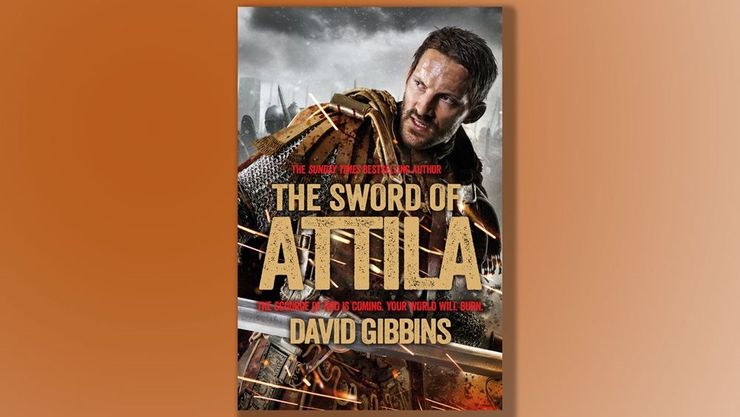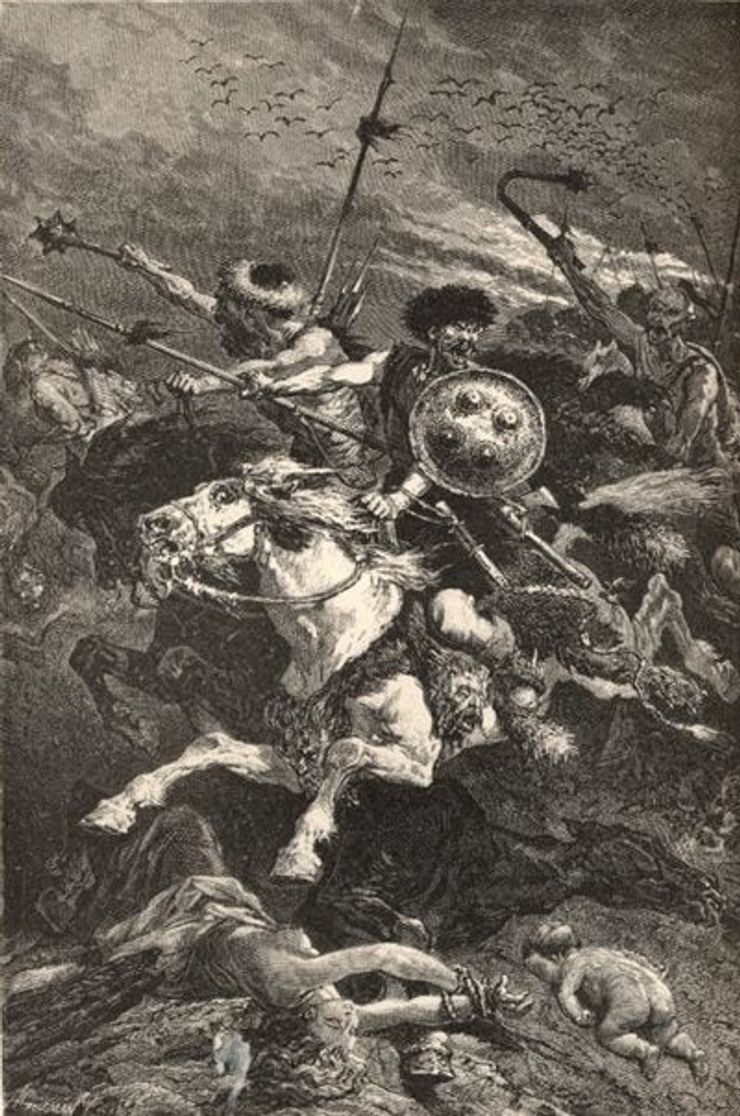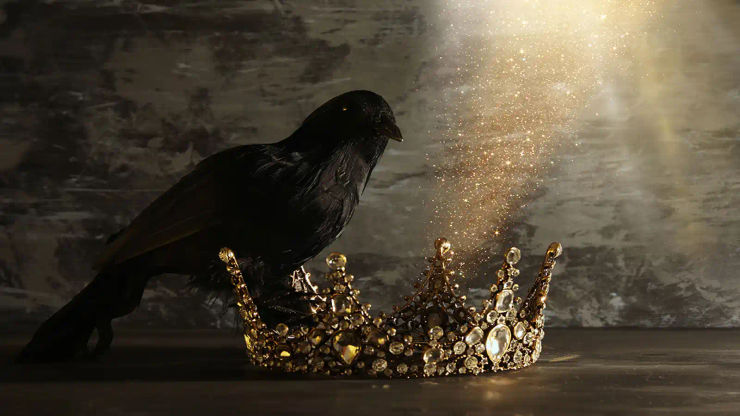Author David Gibbins on the battle tactics of Attila the Hun
David Gibbins, the author of The Sword of Attila, gives us an insight into the battle tactics, strategies and formations of Attila the Hun.

David Gibbins is the author of The Sword of Attila, and previously worked as a lecturer in archaeology, ancient history and art history. Here, he tells us more about the battle tactics, strategies and formations of the army of Attila the Hun.
Discover our edit of the best new fantasy novels.

The onslaught of Attila and the Huns against the western Roman Empire in the 5th century AD has come down to us as the very epitome of terror, as an unassailable force that swept all before it just like the Nazi blitzkrieg – the ‘lightning war’ – that put most of Europe under Hitler’s control soon after the outset of the Second World War. Any thought of tactical complexity by the Huns is subordinated by images such as the one opposite, from a popular history of France published in the 19th century, complete with trampled babies reminiscent of the exaggerated newspaper depictions of German atrocities in Belgium at the beginning of the First World War. There could be nothing exaggerated about the Nazi blitzkrieg of the Second World War, though images of that too were used to bring home the reality of the threat and galvanise opposition to it. Many fell before the onslaught, paralysed by terror; others gained strength by standing up to it, however belatedly. How much of this image of modern blitzkrieg can be applied to the Hun onslaught of the 5th century and the Roman response to it?
Certainly the rapidity of the Hun advance in the middle years of the 5th century bears all of the hallmarks of ‘blitzkrieg’, characterised by rapid movement, concentrated power and integrated military effort. It would be tempting to leave it at that – to ascribe the Hun success to an avalanche of action, and to the psychology of terror – were it not for a few precious accounts by ancient authors as well as archaeological finds that allow us to say something about tactical detail. Almost everything that has ever been written with any authority about Hun tactics derives from this passage by Ammianus Marcellinus, a Roman soldier in the late 4th century:
They are lightly equipped for swift motion, and unexpected in action; they purposely divide suddenly into scattered bands and attack, running about in disorder here and there, dealing terrific slaughter . . . you would not hesitate to call them the most terrible of all warriors, because they fight from a distance with missiles . . . then they gallop over the intervening spaces and fight hand to hand with swords, regardless of their own lives; and while the enemy are guarding against wounds from the sword-thrusts, they throw strips of cloth plaited into nooses over their opponents and so entangle them that they fetter their limbs . . .
The site of the Battle of the Catalaunian Plains, the greatest battle ever fought by the Huns – and the last great battle of the western Roman Empire – has yet to be pinpointed conclusively, so battlefield archaeology cannot play a role. However, a number of Hun weapons have been discovered that give a sharp edge to Ammianus’ account. In 1979 near the monastery of Pannonhalma in Hungary a farm worker digging a new vineyard struck something in the sandy soil. He had discovered two great swords of the mid-5th century, possibly part of a sacrificial trove. They were straight, two-edged swords, over a metre in length, similar in size to the gauntlet swords of the Marathas in India of the 17th century and like those clearly designed for cavalry. Alongside the swords were the gold decorations that were all that remained from a composite wooden bow, an item of such richness that some scholars have even suggested that the trove might have been deposited by Attila himself.
These two weapons, the long sword and the bow, were the tools par excellence of the Hun warrior, and their prowess at using them from horseback goes a long way to explaining their success. Underlying it all was a physical strength hinted at in the only eyewitness description of Attila, by the Greek diplomat Priscus: ‘Short of stature, with a broad chest and a large head … a flat nose and a swarthy complexion, showing evidence of his origin.’ Whereas the Marathas in India used iron or brass gauntlets to strengthen their sword-arm, men of Attila’s physique would have had short, immensely powerful arms that allowed them to wield a long sword using the strength of their wrists alone, and to shoot a bow with accuracy and power even from a moving horse. It is possible, therefore, to suggest that the tactical strength of the Huns lay in the individual warrior himself – in his horse and horsemanship, in his weapons and his sheer physical strength, all of it fuelled by the adrenaline and battle-lust that came with the thundering speed of a cavalry charge.
The extent to which Attila’s onslaught represents tactical debate and decision-making can never be known. Even in the 20th century the concept of blitzkrieg as a coherent strategy was more a perception of the victims than the attacker, with the term itself first being used in British newspapers. Nevertheless, there can be little doubt that Attila - like Hitler - knew how a rapid onslaught could be boosted by the tactics of terror, epitomised by the shrieking siren of the Stuka dive bombers over Europe. Attila may have consciously exploited the Roman fear of the ‘other’, of the terrifying, larger-than-life warriors seen in the 19th century illustration; Attila had been classically educated and would have been well aware of the long-standing fear of barbarians from the east, of men like him, ‘swarthy of complexion … showing evidence of his origin.’ But what both Attila and the Nazis could only learn through experience was the one great weakness of blitzkrieg, that it depended for momentum on the rapid collapse of an enemy and faltered once an enemy resisted. This was what Attila discovered to his cost when the Roman forces under Aetius met him in set-piece battle at the Catalaunian Plains, just as Hitler was to discover when the British refused to bow to the Nazi air onslaught and the threat of invasion and instead stood their ground.
The Sword of Attila
by David Gibbins
The fall of Rome was just the beginning. A new empire will rise.
AD 439: the Roman Empire is on the brink of collapse. With shocking speed a Vandal army has swept through the Roman provinces of Spain and north Africa, conquering Carthage and threatening Roman control of the Mediterranean. But a far greater threat lies to the east, a barbarian force born in the harsh steppelands of Asia, warriors of unparalleled savagery who will sweep all before them in their thirst for conquest – the army of Attila the Hun.



